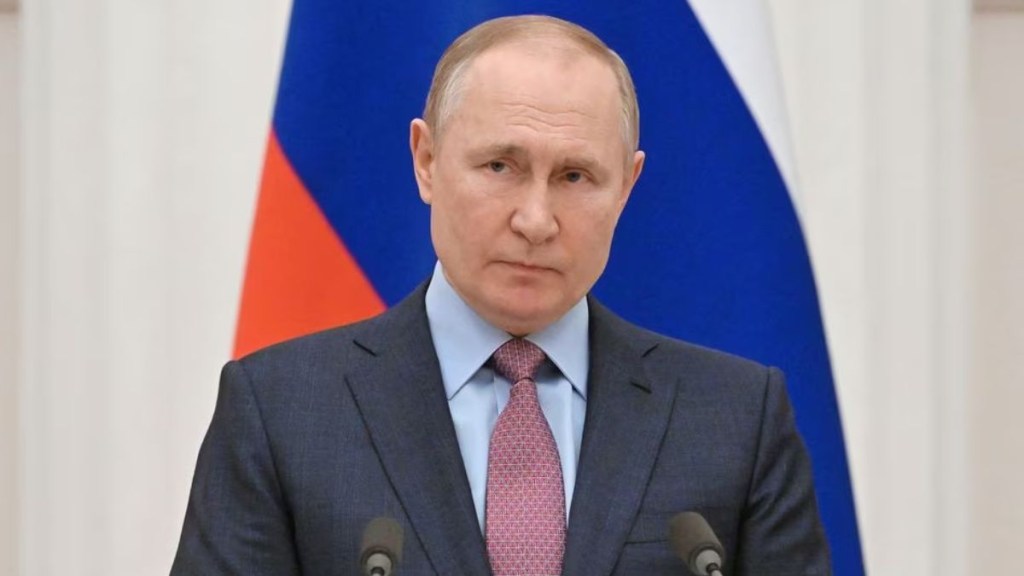Russia on Tuesday (Feb 21, 2023) announced its decision to suspend its participation in the New START Treaty (Strategic Arms Reduction Treaty) which is expected to have global consequences. The announcement was made by Russian President Vladimir Putin in his speech to the Federal Assembly.
It will destabilise the nuclear balance that existed in the last few decades. “At this point, it is not easy to ascertain the causes that pushed Russia to take the decision. Moscow accuses Washington, while the latter blames the former for this act. Each side will stick to its narrative,” opine experts.
Nevertheless, if we scratch beyond the surface, the following factors pushed Moscow to take the decision: “Moscow believes that Washington is no longer interested in maintaining nuclear parity with Russia. From Washington’s perspective, Russia is a regional power, and its interests cannot be compared to that of the US. The US views itself as a global power. Its dominance requires her to test new weapons and deploy more warheads globally. Some elites in Washington have long argued for the withdrawal of the US from this treaty which constrains her from deploying weapons globally. China’s rise has also added a new dimension to the global order, and many argue that China should be a part of such a treaty,” explains Prof Rajan Kumar, School of International Studies, JNU.
According to Prof Rajan, “Secondly, Moscow believes that Russia’s withdrawal from the treaty will put pressure on Washington and the international community. The West is extremely cautious about the proliferation of nuclear weapons. The nuclear regime has always been skewed where the nuclear states maintain the right to test and exchange, but non-nuclear states cannot engage in such acts. Moscow believes that its decision to suspend participation, and not yet withdraw, will alarm non-nuclear states and western citizens. The US has withdrawn from all other arms agreements with Russia. Only this treaty survived. However, now the fate of the New START Treaty has also come under question.”
Adding, “The third point is that Moscow also fears that the US might try to test weapons and provide nuclear weapons to Ukraine. There is no clear evidence to suggest that Washington has any such plans, but at times perceptions matter more than reality.”
In any case, Russia’s decision to suspend participation will have dangerous consequences. The world moves one step closer to Armageddon. “The new development will ensue a new arms race between Russia and the US. Russia may not compete with the US, but new players are already there in the game. China will try to catch up with the US, which India, Pakistan and others would follow,” he states.
Existing regimes of the CTBT (Comprehensive Nuclear-Test-Ban Treaty) and Treaty on the Non-Proliferation of Nuclear Weapons (NPT) will come under question. Other states will likely follow suit if Russia and the US test or deploy new nuclear warheads. International security is on a slippery slope.
What is the New START Treaty?
It is related to Measures for the Further Reduction and Limitation of Strategic Offensive Arms, START III, or simply New START between Russia and the US. Both countries in 2021 had negotiated the extension of the Treaty until February 2026.
Importance of the Treaty for International Security
On April 8, 2010 in Prague President of Russia Dmitry Medvedev and the US President Barack Obama, signed the Comprehensive Arms Reduction Treaty (START III, START).
In March 1997 the proposal to develop START III was first discussed and during consultations between the presidents of the Russian Federation and the US – Boris Yeltsin and Bill Clinton in Helsinki.
Though the negotiations were inconclusive, however, as per the 1997 version START III was planned to set “ceilings” at the level of 2,000-2,500 strategic nuclear warheads. And also give the treaty an indefinite character.
In June 2006 President Putin suggested to start a new negotiation process and experts soon started working on the document following a meeting of Presidents Dmitry Medvedev and Barack Obama in London on April 1, 2009. This was within the framework of the G20 Summit. At the end 11 months of negotiations the two signed the document. And the two sides submitted the document for ratification in May 2010. It was approved by the US Senate on December 22, 2010, and Russia’s state Duma and Federation Council ratified in January 2011. And, Russia has reserved the right to withdraw from the treaty if the US Missile Defence System reaches a level of development and becomes a threat to Russia. As per the provisions of the preamble the relationship between START and missile defence is spelled out clearly and must be taken into account by the parties. On February 5, 2011, an exchange of instruments of ratification took place in Munich.

